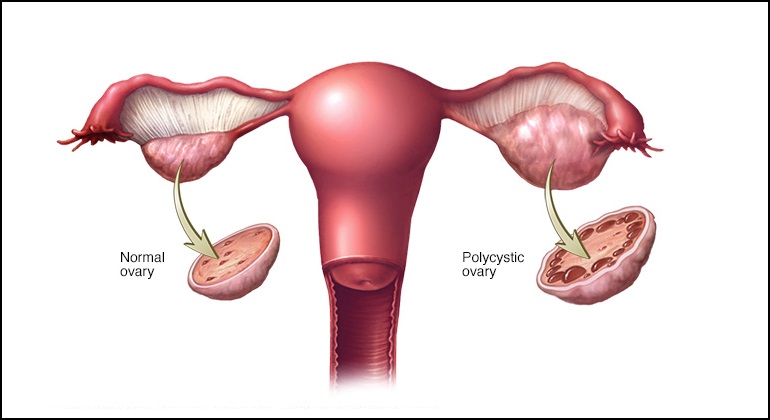
What is PCOD ( polycystic ovarian disease) ?
Patients suffering from polycystic ovarian disease (PCOD) have multiple small cysts in their ovaries (the word poly means many). These cysts occur when the regular changes of a normal menstrual cycle are disrupted. The ovary is enlarged; and produces excessive amounts of androgen and estrogenic hormones. This excess, along with the absence of ovulation, may cause infertility. Other names for PCOD are Polycystic Ovarian Syndrome (PCOS) or the Stein-Leventhal syndrome.
What is the cause of PCOD ?
We don't really understand what causes PCOD, though we do know that it has a significant hereditary component, and is often transmitted from mother to daughter . We also know that the characteristic polycystic ovary emerges when a state of anovulation persists for a length of time. Patients with PCO have persistently elevated levels of androgens and estrogens, which set up a vicious cycle. Obesity can aggravate PCOD because fatty tissues are hormonally active and they produce estrogen which disrupts ovulation . Overactive adrenal glands can also produce excess androgens, and these may also contribute to PCOD. These women also have insulin resistance ( high levels of insulin in their blood, because their cells do not respond normally to insulin).
Patients suffering from polycystic ovarian disease (PCOD) have multiple small cysts in their ovaries (the word poly means many). These cysts occur when the regular changes of a normal menstrual cycle are disrupted. The ovary is enlarged; and produces excessive amounts of androgen and estrogenic hormones. This excess, along with the absence of ovulation, may cause infertility. Other names for PCOD are Polycystic Ovarian Syndrome (PCOS) or the Stein-Leventhal syndrome.
What is the cause of PCOD ?
We don't really understand what causes PCOD, though we do know that it has a significant hereditary component, and is often transmitted from mother to daughter . We also know that the characteristic polycystic ovary emerges when a state of anovulation persists for a length of time. Patients with PCO have persistently elevated levels of androgens and estrogens, which set up a vicious cycle. Obesity can aggravate PCOD because fatty tissues are hormonally active and they produce estrogen which disrupts ovulation . Overactive adrenal glands can also produce excess androgens, and these may also contribute to PCOD. These women also have insulin resistance ( high levels of insulin in their blood, because their cells do not respond normally to insulin).
